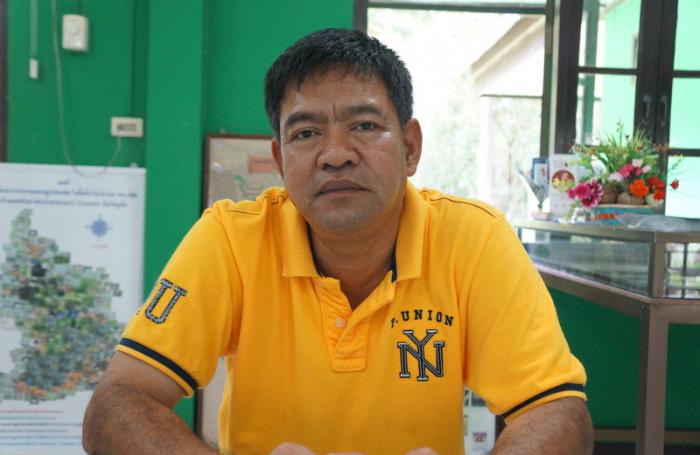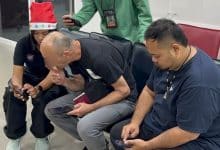Opinion: Enhancing visitor safety in national parks

PHUKET: Piyawat Sukhon, 52, took up his position as the chief of the Khao Phra Thaeo Non Hunting Zone in Phuket last June. He is originally from Nakhon Sri Thammarat and graduated with a Bachelor’s Degree from Forestry School in Phrae Province, and a Masters Degree in forestry from Kasetsart University.
While working for the Department of National Parks, Wildlife and Plant Conservation (DNP), he had a chance to fly over Phuket in a helicopter for a forest inspection. Here, he talks about what can be done to enhance visitor safety in the area.
Our office is in charge of looking after animal hunting in the Khao Phra Thaeo forest. The area is about 13,925 rai and was officially designated as a non-hunting area on June 30, 1998. It has two waterfalls, which are the Bang Pae and Ton Sai waterfalls. The Gibbon Rehabilitation Project is located at the Bang Pae waterfall.
We have established a center for nature studies at Ton Sai waterfall, where we hold activities and camping for students or others interested in studying nature. However, as this area is officially under our jurisdiction, we ask people to communicate with us beforehand, rather than simply showing up and setting up a camp site.
There is also a trekking trail from Ton Sai to Bang Pae waterfall, about four kilometers long. Locals and tourists are welcome to the area. We have set up signs to guide people about where to go for hiking and observing nature. The signs are in both English and Thai, with universally recognized symbols that everyone can understand.
However, some people still don’t follow official instructions. In some places, we have signs saying ‘No Entry’, but people choose to ignore them and get lost as a result. Although we do have staff and rescue workers standing by for emergencies, we prefer to be proactive and prevent such cases from occurring at all.
Sometimes, tourists misunderstand when they see tracks marked out for gibbons. Please understand that these are only for officials to use when checking on gibbons. We have also placed signs saying ‘Officials Only’ in order to prevent any confusion for visitors.
We have clearly marked out the tracks that are meant for visitors. On the tracks, we have signs to inform visitors which station they are at. There are 13 stations at the moment, which serve as markers in case visitors get lost or need help. They can simply say which station they are close to and we will be able to locate them.
If you come in a group, we can also provide staff to help and guide you. Although this is not our main job and we do not have many officers, we prefer to help visitors when they arrive, rather than spending time and resources searching for them later, especially after dark.
If you would still prefer to do it alone, we recommend that you at least let us know of your plans to hike, even if only for our records. If you don’t inform us, we would assume that you have come for the waterfall.
There are many interesting stories about several spots in the Khao Phra Thaeo area that even Phuket natives may not know about. I have gained a lot of precious knowledge about the area by talking to wise, local people.
Tourists are free to visit and we do not wish to stop anyone from coming into the non-hunting zone, except for some designated areas. We are currently considering making a map so that visitors can use it while they are walking in the forest.
We want to make the area more remarkable, but we cannot do much because the main purpose is a non-hunting area, not a tourist attraction.
We try to offer whatever conveniences we can and hope that tourists understand our role and will follow our instructions. Please help us maintain the forest in all its natural glory and do not do anything to harm nature.
Last, but not the least, safety must always be a top priority. We will look out for you to the best of our abilities, but on your part, please try not to put yourselves at risk to begin with.
— Chutharat Plerin
Latest Thailand News
Follow The Thaiger on Google News:


























